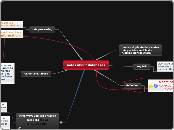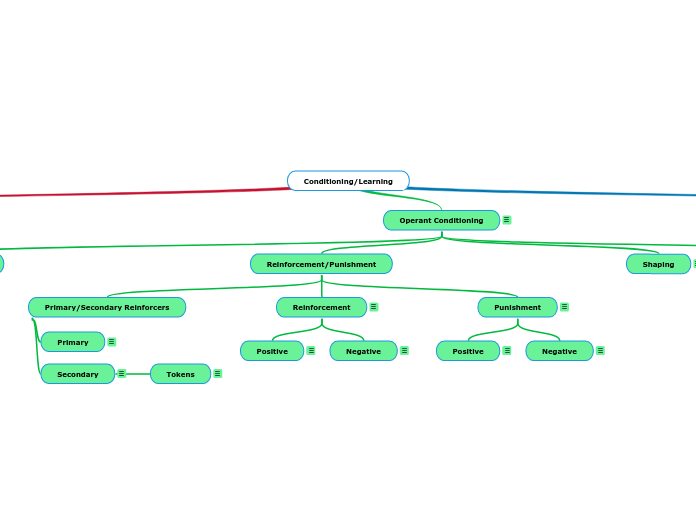Chapter 2 Approaches to research
Choosing a method
Uses/users of the findings
Ethics
Validity, reliability and generalisability
Times
Resources
Data availability/access
Previous research
The research question or hypothesis
Multiple methods: Triangulation
Using more than one methodology to gather data
Using different interviews, observers and analysts in the one study
Using more than one sampling strategy
Analysing data in more than one way
Data Issues
Self-reported and observed
Self-repoarted is about the research involving asking people's past, present and future behaviour and current attitudes and aspirations.
Self-reported's disadvantage: Some researchers can not make sure the accuracy or the honesty about the research.
Example: The amout of the drink alcohol can not be measured.
How much money did the interviewees spend in one product in the last year?
Self-reported
Observed data
One research style to fix the self-report is observed data which observe the behaviour.
Unobtrusive method
Observational method
Primary and secondary data
Secondary data
Existing data collected by others for some other purpose
Example: Sales figures and population numbers, income and expenditure, staffing levels, accident reports, crime reports and health data.
Primary data
Primary data: Some new information collected by the researchers.
The range of reseearch approaches
Cross-cutting and subsidiary techniques
Delphi technique
Media-sponsored surveys
Historical research
Meta-analysis
Use of scales
Example 2.1 describe an investigation which used three such scales: one related to self-esteem, one to job satisfaction and one to family enviroment.
Scale is used very widely,
Projective techniques
"What if" is always used in psychological research.
Panel surveys
Longitudinal studies
Ideal for studying organisational change and the combined effects of social chanage,age and experience.
Longitudinal studies are not common in the general business field, but common in areas such as health and education.
Textual analysis
Hermeneutics
The analysis is of a more qualitative nature.
Content analysis
When the analysis is quantitative.
Experimental methods
Case studies
Qusetionnaire-based surveys
Questionaire-based surveys's three issues:
1. specific about the data requirements in the research
2.the surveys ara based on the respondents' own account of their behaviour, attitudes or intentions.
3. When quantified information is required concerning a specific population and when individuals' own accounts of their behaviour and attitudes are acceptable as source of information, the questionaire-based surveys should only be used.
Qualitative methods
Only the qualitative approaches are used when the concepts, terms and critical issues should be defined by the subjects of the research and not defined by the researchers.
When researchers focus on the people's attitudes and meanings, qualiative techniques are useful.
Biographical
Ethnography
Group interviews or focus groups
Informal and in-depth interviews
Unobtrusive techinques involve gathering information about people's behaviour without their knowledge.
Example: Observation could be the only way or technique to search the illegal activity of people or empolyer's threatened activity to their employees.
Observation is the access to presenting a perspective that is not so clearly in some situations personal involved.
Example: Some people may not realize their pattern of movement interact with other people in the office place.
Using secondary data
If exsiting the secondary data can help to answer some questions more easily and effectively, the researchers won't need to spend too much time to collect the primary data. Because of some problems in the secondary data, some of them may not be explored, so they will have more expansion in the potentially research.
Using the literature
In such as management, the consolidation of existing knowledge through then entire literature reviews is needed.
Because a review of the literature indicates the state of knowledge on a topic and as a source of stimulator ideas, it plays a important key in the formulation of research projects.
Just thinking
Creativity.
Scholarship
Scholarship is kind of the contribution of research because scholarship can inspire the teachers to generate the new knowledge from new insights, critical or innovative ways of looking at old issues, or the identification of new issues or questions.
Introduction: Horses for courses
The researchers should be aware of the limitations of any particular appaoach, to use criteria to select research methods, not to make claims that can not be justified for the methods used.
Horses for courses philosophy is not about good or bad, is about appropriate or inappropriate. It is not about good or bad question, is about good or bad use of method.
The methods are divided into 'major' approaches or methods and 'cross-cutting or 'subsidiary' techniques.
Paradigmatic Issues
A paradigm is a shared framwork of assumptions held within a discipline, subdiscipline or school of thought within a discipline.
Experimental and non-experimental approaches
The controlled experiment is not possible or appropriate.
Example: The researchers interested in the effect of levels of remuneration on management cannot identify the incomes of a group managers.
In some situations, when two group people who have the same identical income levels can not differ markly from their personalities, family situation, physical health, and so on. The researchers have to use non-experimental research better than experimental approaches.
Paradigmatic awareness
In the past, the positivistic and deductive research was very largely used, interpretive and inductive research has now become very popular in the academic realm.
Non-experimental research
To investigate differences between people as they exist in the real world
Experimental research
Biological/medical sciences
Natural
Physical
Induction and deduction
Hypothesis: A potential explanation which might be supported or negated by data, which can rise from informal observation and the experience of the researcher, or from examination of the literature.
Most research is partly inductive and partly deductive.
Positivist researchers focused on deduction more than induction in the research. Critical interpretive researcher focused on induction more than deduction.
Deductive
Deductive: The research process begins from explanation/hypothesis/theory, to observation/description/data collection, to analysis.
Inductive: The research process begins from observation/description/data collection, to analysis to explanation.
Quantitative and qualitative methods
In the nature. some information is quantiative, some information is qualitative.
Tendency; Quantiative and qualitative research have more tendency to combine together to rich the information.
Difference: The nature of information collected and the way it is analysed.
Qualitative: small number of subjects
Qualitative research focus on a few number of the representative number rather than a lot of number. Because of that, research is about a few individuals and organisations.
Participant observation
In-depth interviewing
Unstructured
Informal
Observation
Quantitative: numerical data
Quantitative focus on the numbeical evidence to conclusion or to test hypothesis so that the quantitative researchs collect the representative of some wider population.
Secondary source such as sales data
Oobservation
Questionnaire-based surveys
Positivist and critical/interpretive research
Sometimes, positivist and critical can coexist in the same research and complement for another.
Example: A study comparing workers' salary might use the gathering and analysis of quantitative data on income and form the conclusion which might be involved in critical/interpretive.
Before the research, the researchers should assume which methodology is better and more technically. Sometimes, it is better for researchers to mix the two methodology together which could make the research boarder.
Critical or interpretive paradigm
Oppsite of the positivist, the critical or interpretive paradigm is focused on the human behaviour and studied on some non-human phenomena. Sometimes, it is subjective and based on the social enviroment.
Action research
Ethnogrphic
Inductive
Reflective
Interpretive
Phenomenological
Qualitative
Hermeneutic
Positivist paradigm
Positivist think the world is external and objective, they usually conduct and approach concentration on objective description and explanation.
deductive
quantitative
empiricist
scientific









